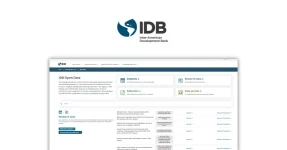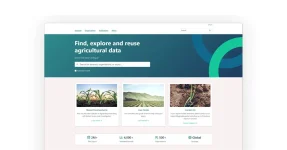As the temperature rises, so does the fire risk for much of Australia. By being informed and prepared, we can help reduce the impact of fires on our communities, as well as prepare for and deal with other emergencies.
The provision of emergency warnings and related information is an integral part of Australian state and territory emergency management arrangements. These warnings assist the public in making informed actions to safeguard life, property, and the environment.
Emergency personnel can minimise their search time and maximise their recovery time when they have access to real-time information emphasising the areas most affected. The use of data analytics and intelligence is already important to saving lives and facilitating effective emergency management. With the availability and usage of smartphones and social media, disasters can be measured in real-time, allowing for a rapid and accurate response.
State and territory emergency services, data and digital
There is an enormous amount of literature on data’s growing role in emergency warning, management, preparedness, risk and reduction. This literature shows that while there may be considerable benefits to using data in emergency settings, the provision of data alone is not enough. Given the speed of events, what data is disseminated, as well as how and when, are vital. And, of course, it must be high quality data – accurate, relevant and trustworthy.
Strengthened data analytics and intelligence, including data sharing that is fast, seamless, secure and reliable, is a key priority of state and territory governments across Australia. This includes Queensland’s Fire and Emergency Services Strategy 2030, Emergency Services Victoria’s Strategic Priorities, 2022-2028 and the South Australia Government’s Emergency Management Data Strategy. New South Wales has a Spatial Services’ Emergency Information Coordination Unit to ensure that best spatial and related data is provided to agencies dealing with natural and other disasters. Department of Natural Resources and Environment Tasmania has established an Emergency Services GIS (Geographic Information Services) unit to provide ‘specialised spatial data and services for emergency services’ use in planning, preparedness, response and recovery activities after emergency incidents.’
These state and territory efforts are backed up at a national level by the Commonwealth’s National Emergency Management Agency Data Strategy 2023-25, which focuses on real-time situational awareness to empower decision making, including effective financial support during and after an emergency. And the Commonwealth Scientific and Industrial Research Organisation has been undertaking research to help emergency workers and decision makers involving data visualisation, advanced data mapping, predictive analytics and mass data integration.
Single Point of Truth (SPOT) App
Link Digital’s contribution in this growing area has involved the development of Single Point of Truth (SPOT) App for the Australian Capital Territory Emergency Services Agency (ESA). Link Digital had supported the SPOT App since its inception in 2018 and was excited to be selected as the preferred supplier when it came time to upgrade the App in 2022.
You can find out much more about the Single Point of Truth (SPOT) App on our site here.
The SPOT App is an internal online web application designed to act as an aggregation point for automated data alerts. This information comes from the police and emergency service personnel, and can concern reports of fire and accidents, notices of official road closures, and whatever else is ‘emergent’ in the emergency response space in the Australian Capital Territory.
Public information officers from the ESA are then able to log into this as a ‘single point of truth’ and draw information from it to compose public alerts. These alerts are then pushed out as an official ‘notice’, to the ESA’s website and social media accounts, and through email and SMS, to the community, journalists, and other relevant government departments, etc, updating and informing them of emergency warnings in near real-time.
During the 2019-2020 bushfires, the App was used regularly to inform the ACT community about official information on severe fire warnings, including evacuations. The App disseminated warnings with minimal delay, providing the ACT community with up-to-the-minute news updates. Before the SPOT App, the alerts, posts, emails and updates were manually sent out, delaying the time for important news to reach the community. Now, everyone receives the same information at once.
Have a similar project? Contact us
Is your organisation interested in utilising data in an emergency response settling efficiently and safely? Contact us and tell us about your project.



